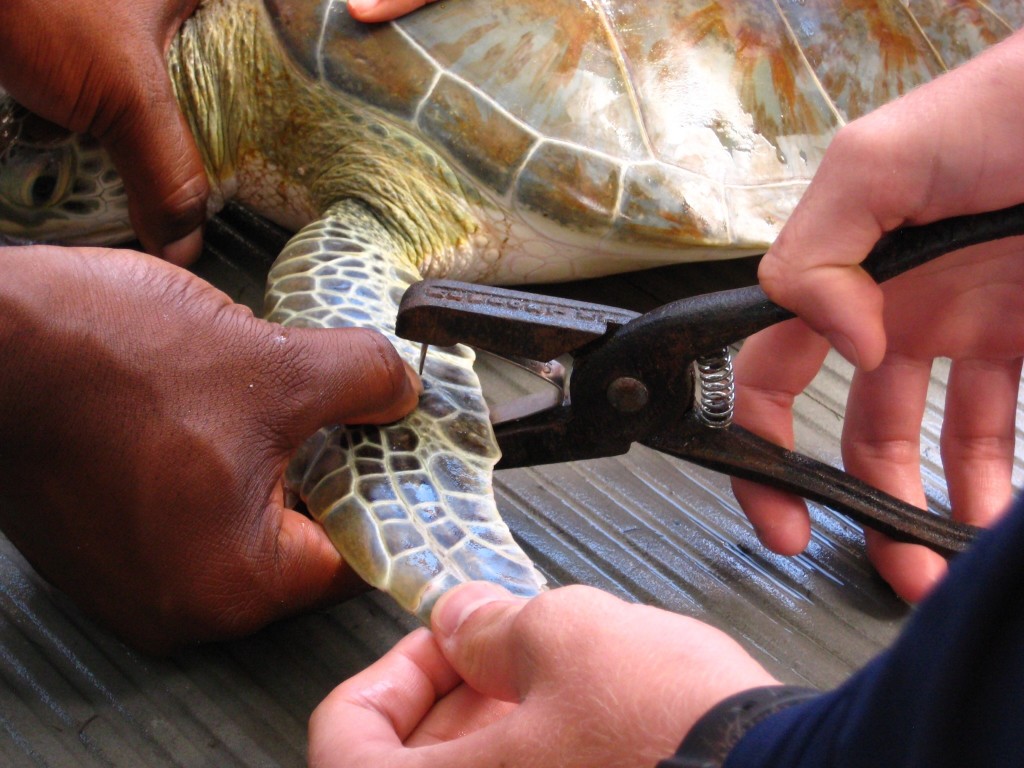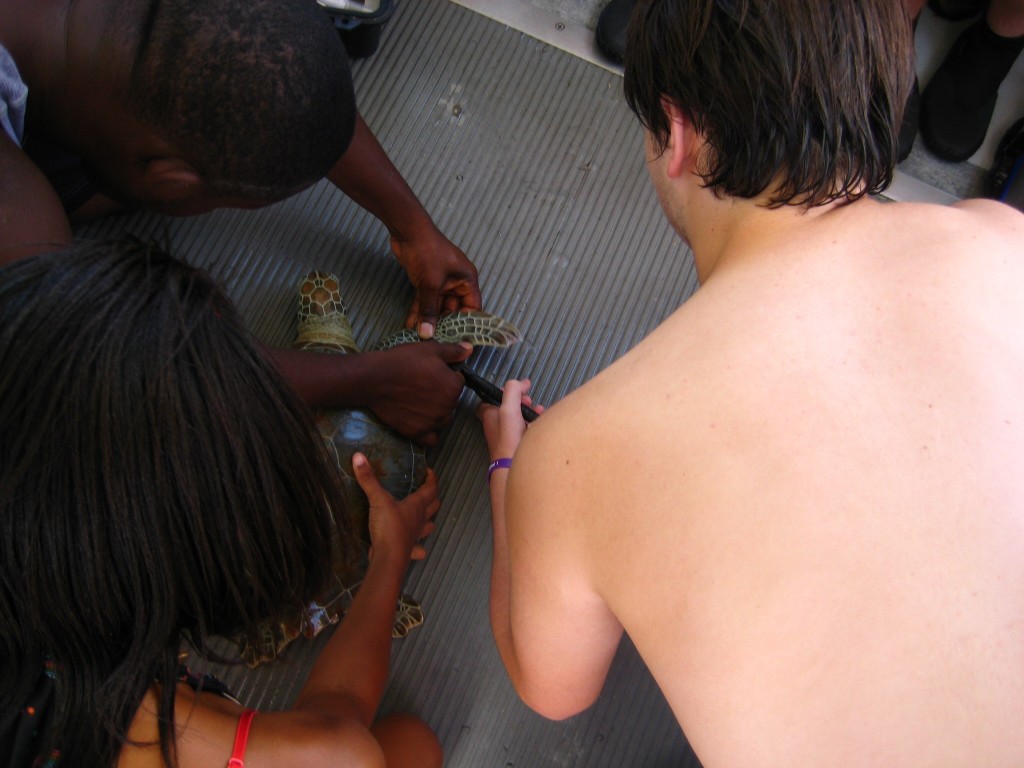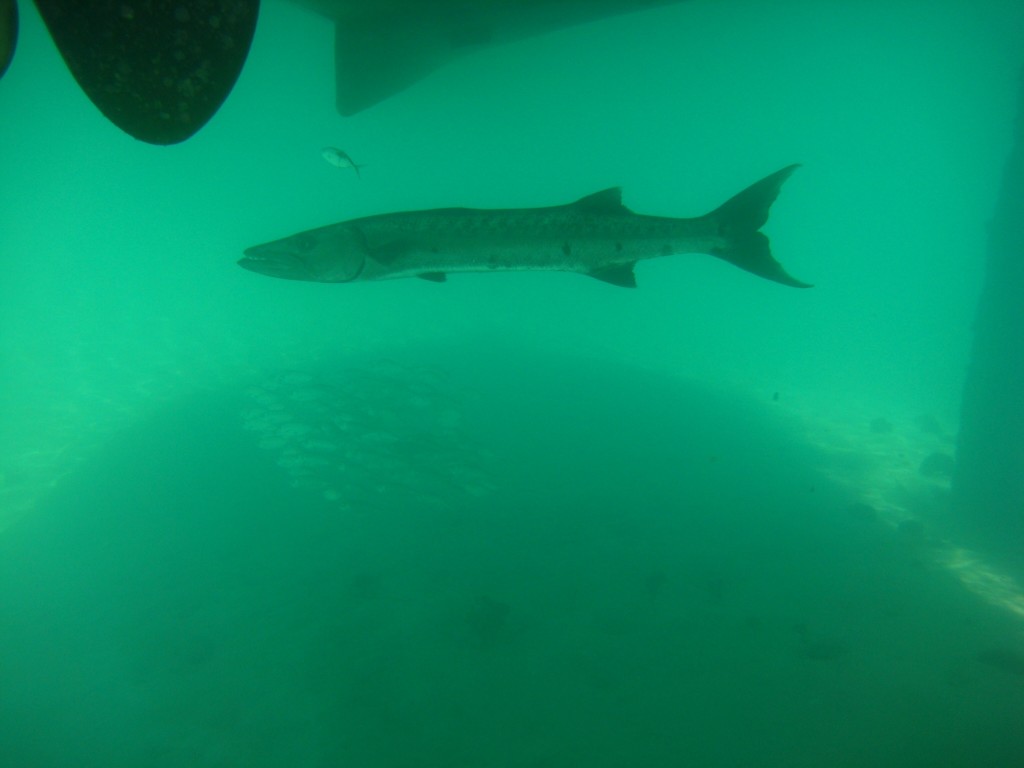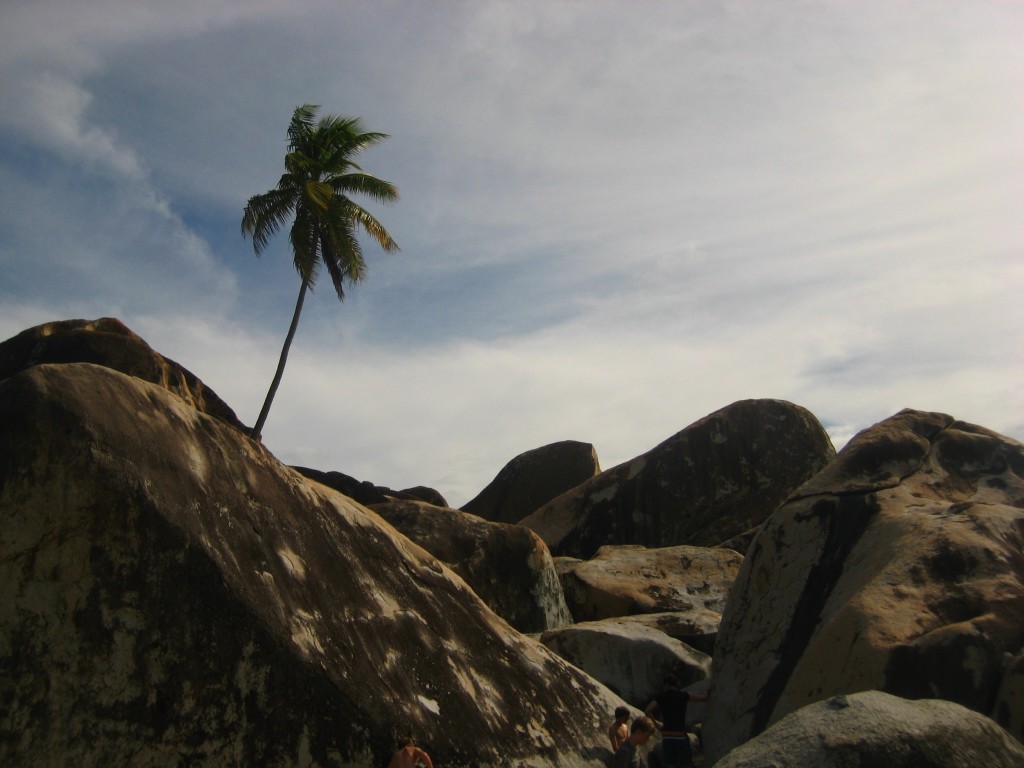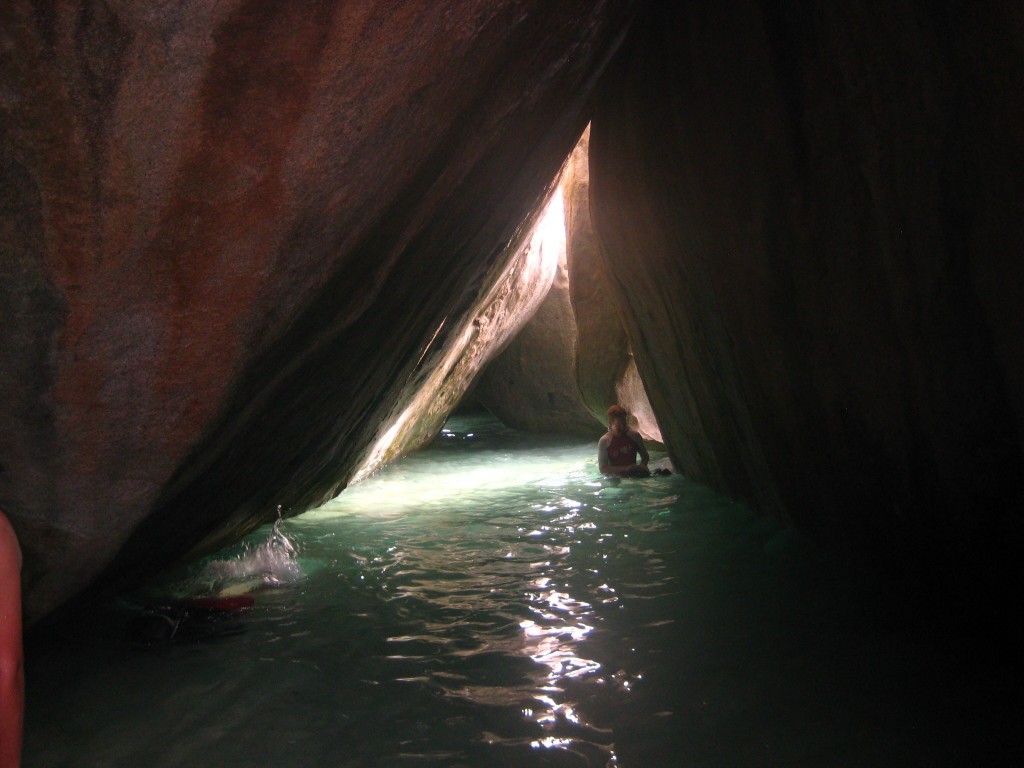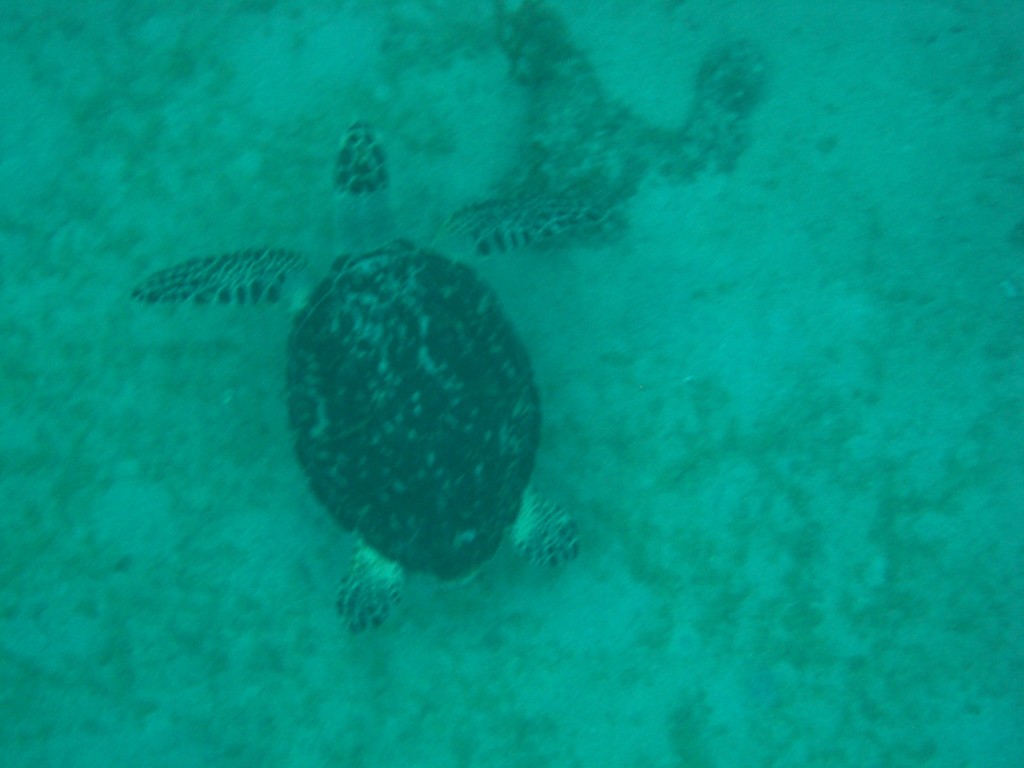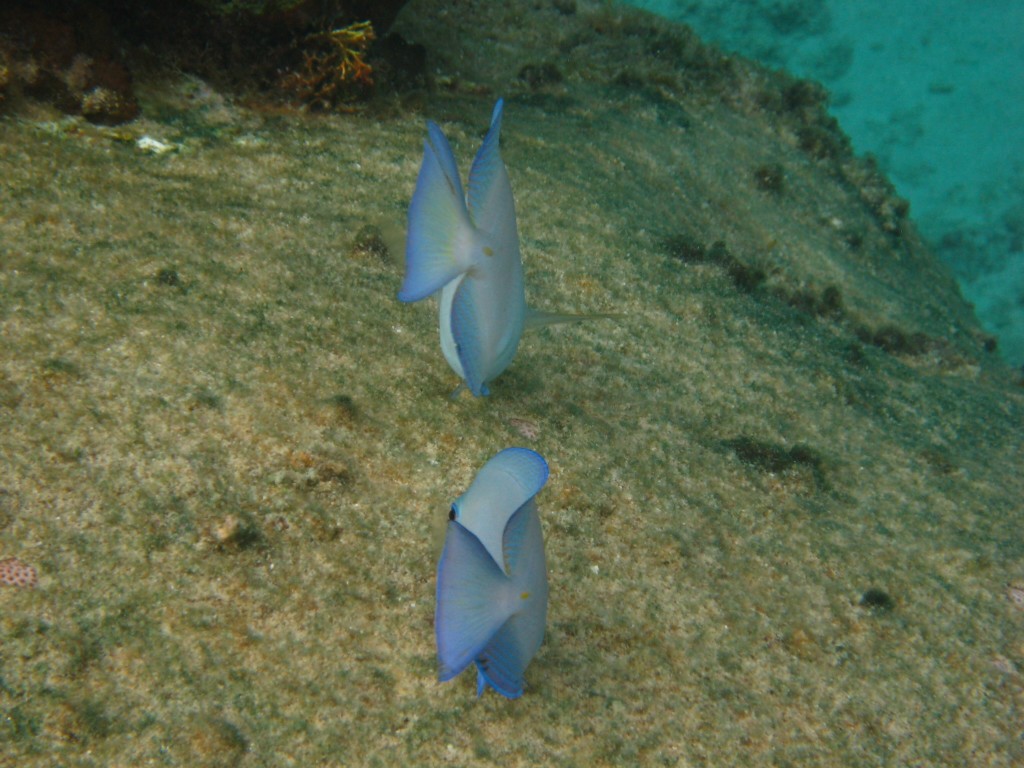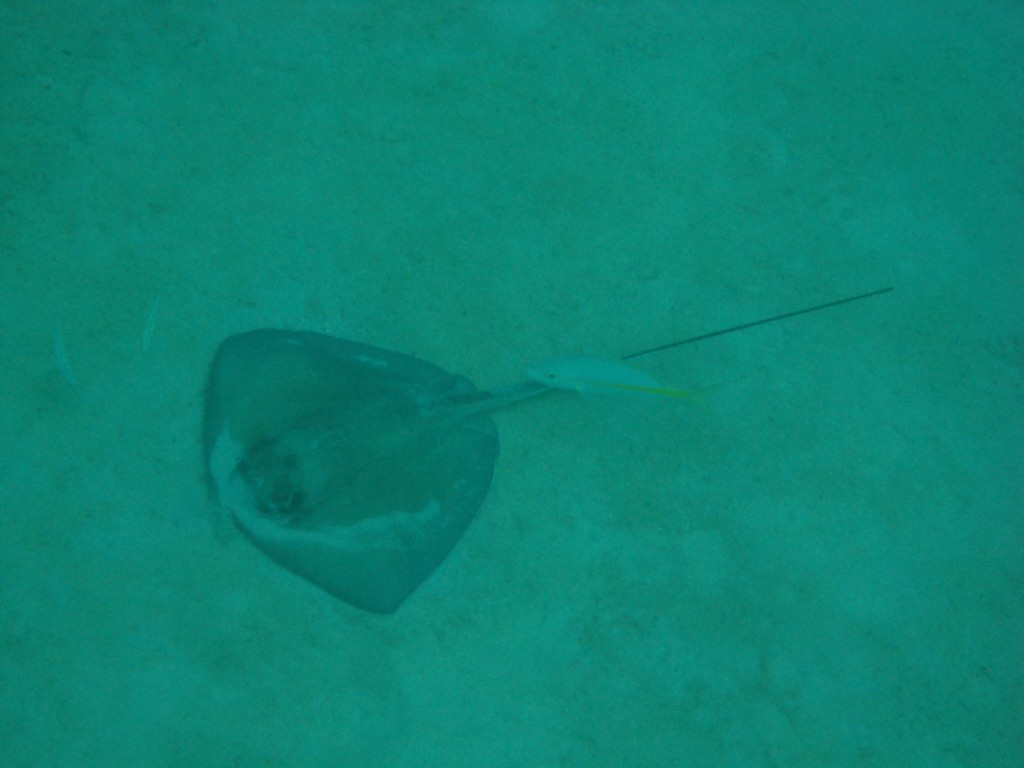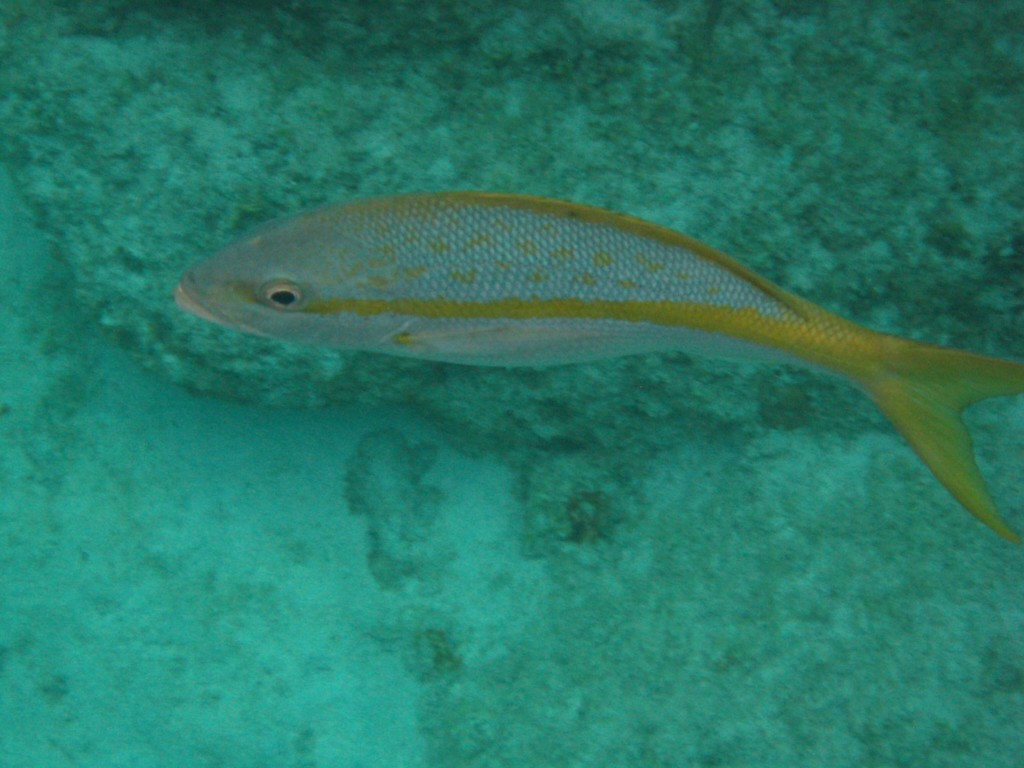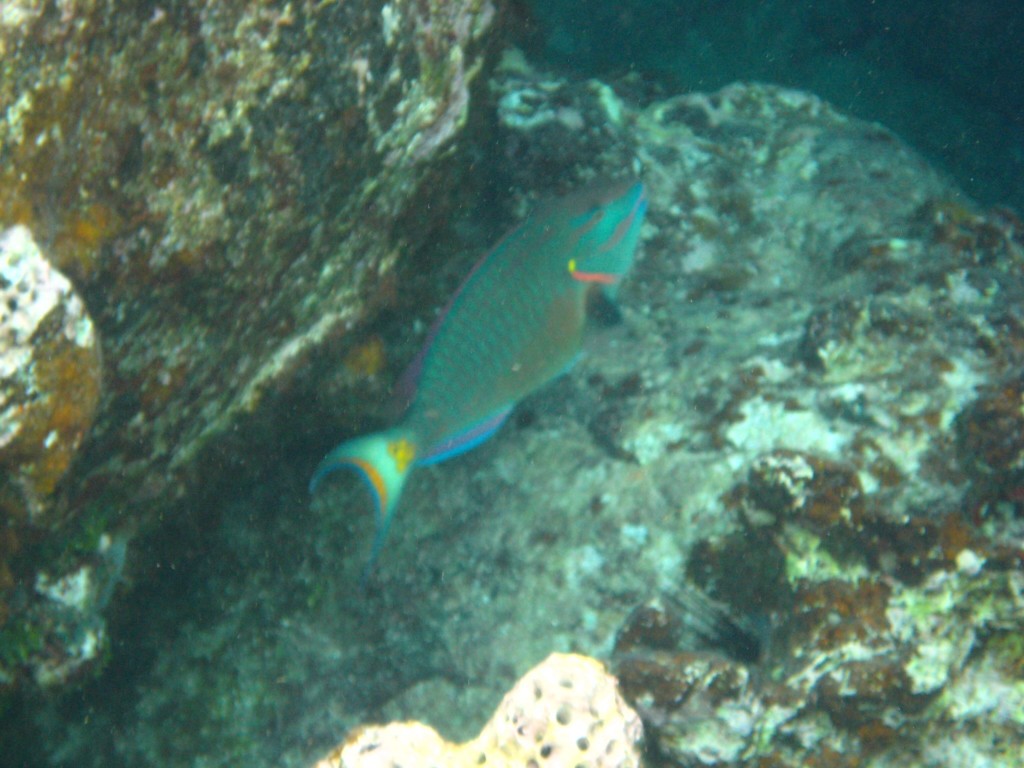On day two of our week on Virgin Gorda, we assisted in turtle tagging, toured the Baths, and then snorkeled our way back to Guavaberry. After another lovely breakfast, we practiced breath control techniques, in preparation for our day of snorkeling, and then tested them out in the pool right outside our breakfast location. At this point, I’m trying to minimize distractions that I find while in the water, such as the act of swimming or holding my camera, to ultimately increase time underwater that can be spent taking pictures or viewing wildlife. Then, we were given a presentation by Joel, a local marine biologist and conservation activist, about some background on our turtle tagging adventure. For example, Joel described what would data we would collect in the event that we catch a turtle, and how we wold collect it, as well as how to properly catch one. We learned that we would measure carapace length and width, flipper length, tail length, and head width. We were also taught that properly tagging a turtle involves two flipper identification tags and an injected microchip. We then took the Sea Dragon from the yacht harbor to Little Dix Bay to try to locate some turtles. Even before we docked the boat, we spotted a turtle from the head of the boat. Alex C., Chris L., Andrew, and I volunteered to be the first group of four to try to locate and capture a turtle. A minute or two after we entered the water from Joel’s boat, I spotted a Green Turtle in front of me. I raised my hand out of the water while never taking my eye off of the turtle to indicate to Joel and his team that I had spotted a turtle, and then waited for them to tell me to proceed to capture the turtle. Once told, I hovered closer to the turtle and began to reach towards it, making my way to the point behind the turtle’s neck that is ideal for anchoring and capturing the turtle. However, even though we were taught that the top edge of the turtle’s shell would provide placement for our fingertips, I could simply not find a place to secure the turtle. The turtle then swam quickly away. Soon after, a member of Joel’s team captured the turtle. Then, we had a little time to snorkel around the bay before Joel would demonstrate to us proper data collection and tagging. After swimming to the Sea Dragon, we found a place to watch Joel who was on the center of the deck. While occasionally pouring water over the animal to cool it, Joel took the same measurements that he taught us about. Then he asked for volunteers to tag the turtle’s flippers. The metal tags are attached to the flippers by clamping the tag over the fin with specially designed pliers, and piercing through the fin only where it will not harm the animal. The tag is designed so that the piercing portion of it will fold in on itself on the other side of the flipper, securing it well. It is also very important that the tags are secured with room between the folded end and the flipper, for possible growth the turtle will undergo. The purpose of the tags are to tell whether an organization has ever captured the animal, and to give it a universal identification code, in case the same, or another, organization ever sees the turtle again. First, Alex C. volunteered to tag the left flipper, and then I tagged the right one. After that, Joel injected the rice grain-sized microchip into the turtle, providing another form of identification in case the metal tags fall off. When scanned, the same code that is written on the metal tags will be displayed on the scanner. Then the turtle was released back into the water. While this was happening, we also spotted a large barracuda under the Sea Dragon. We then headed back to the harbor for lunch. I had a delicious grouper sandwich, while I took a look at all of the pictures I had taken of the morning. After lunch, we had a little break time in our cabins, and then we walked up the road from Guavaberry to the Baths. There we met Casey, Laura, and Brian. The Baths are a series of caves and formations made up of huge boulders that arranged themselves after rapidly cooling and solidifying from being flowing magma that followed several volcanic eruptions. Because the magma solidified so quickly, you can even see huge bubbles in the stone, and hear hollow spaces by tapping on them. Once we navigated through them for about 30 minutes, we reached a beach from which we snorkeled back to Guavaberry. On this snorkel, I was fascinated with vibrantly colored fish that I had never seen before, as well as urchins, crabs, and even another Green Turtle. I even got tangled up with a particularly painful and long jellyfish tentacle, however, what you may not know is that I am extremely tough, and I might not have even cried. After snorkeling, we had some time at Guavaberry to dress before heading to Mad Dog to conclude the day with a wonderful quesadilla dinner. While there, I had a great conversation with Mad Dog’s friendly owner. We played some more bean bag toss and frisbee, and ended with another project video, before heading back to Guavaberry for some blogging and rest.


